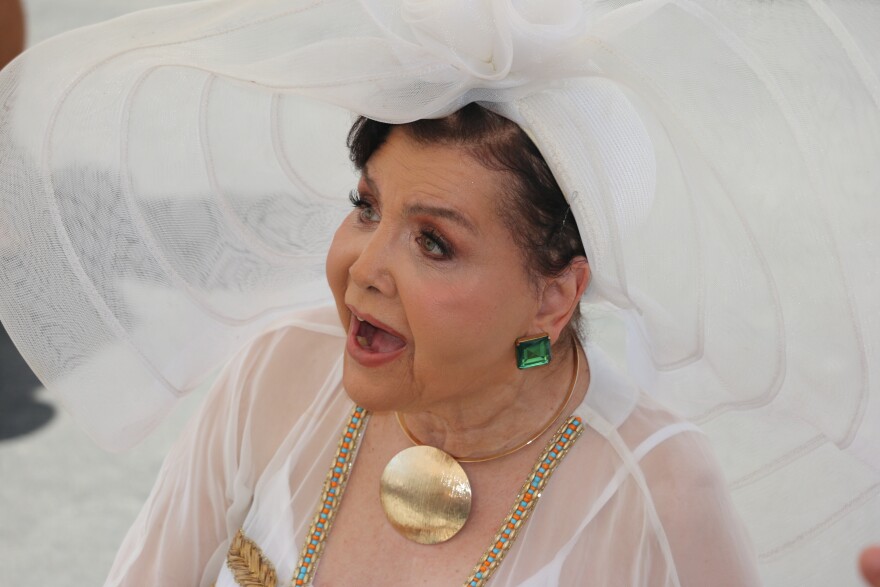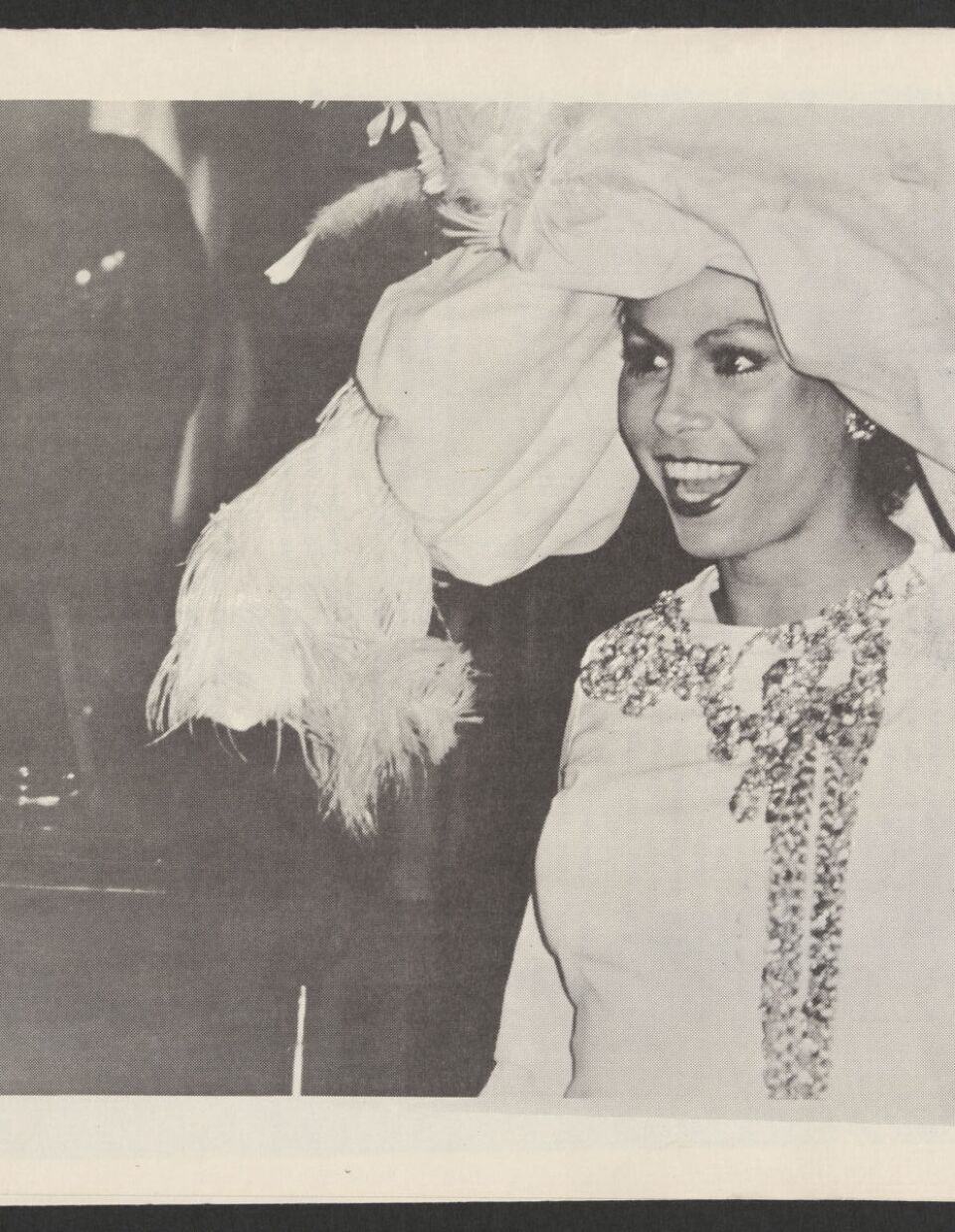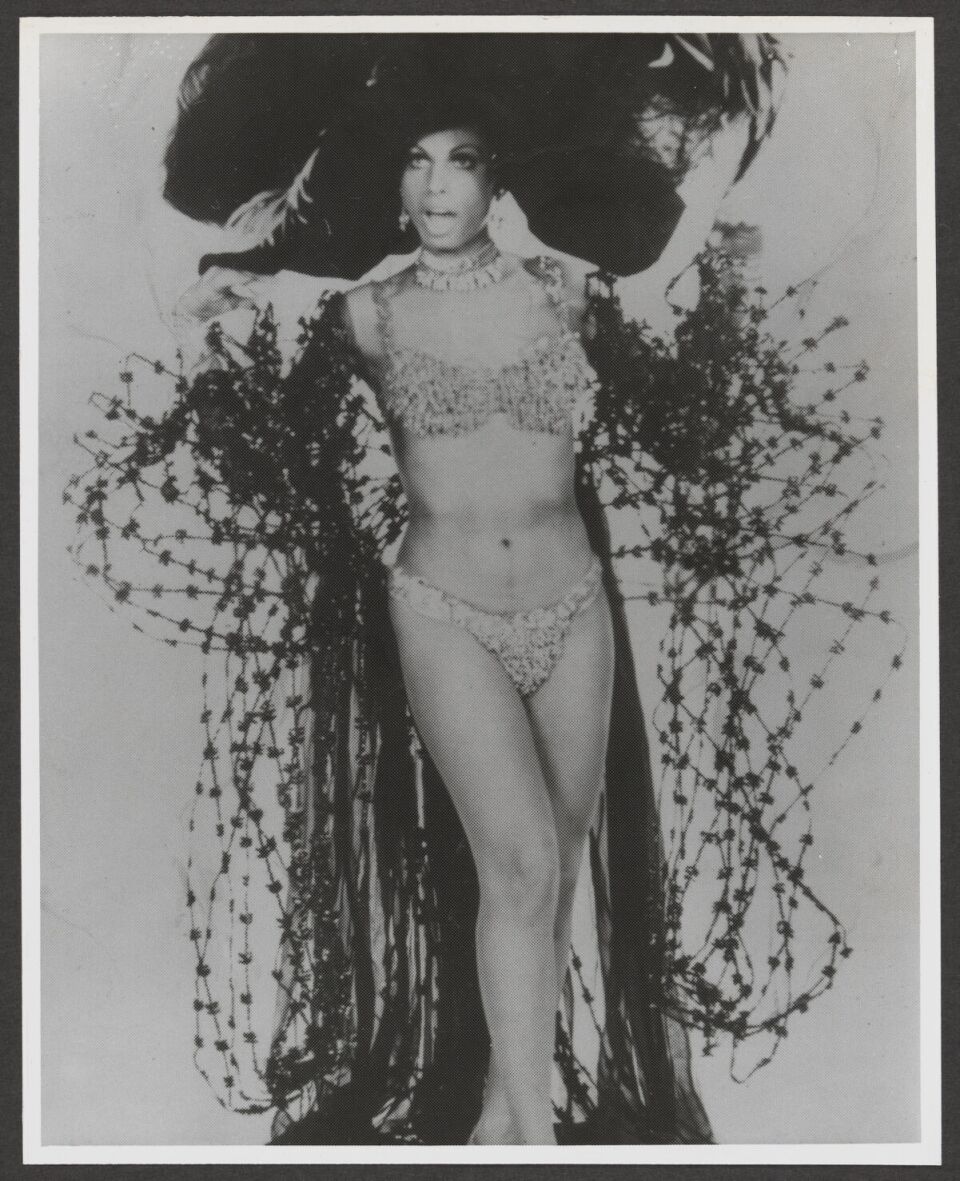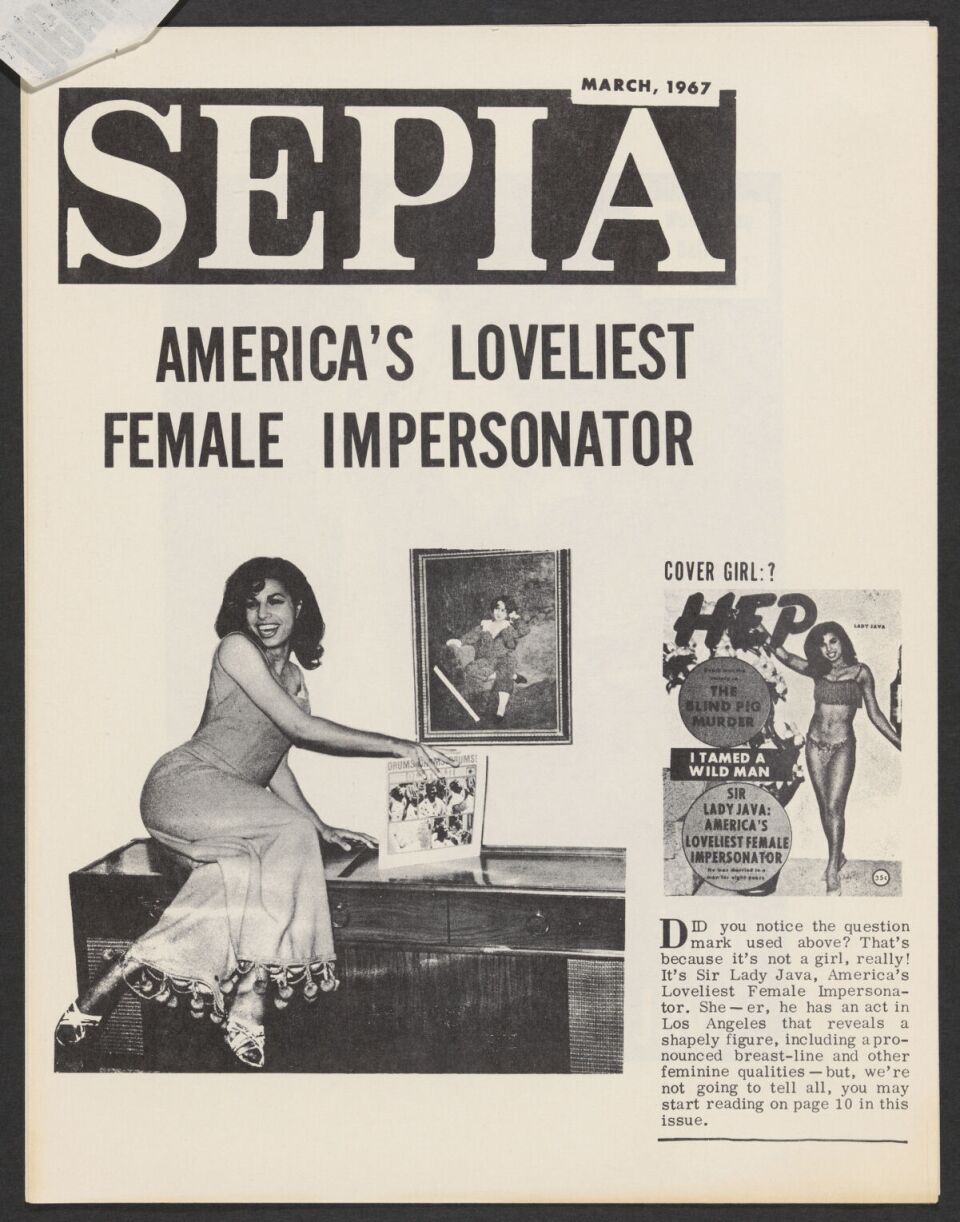Truth matters. Community matters. Your support makes both possible. LAist is one of the few places where news remains independent and free from political and corporate influence. Stand up for truth and for LAist. Make your year-end tax-deductible gift now.
The legacy of the trans trailblazer who fought the LAPD to keep drag performers on stage

In the 1960’s, a raven-haired and svelte drag performer was one of the hottest acts in L.A.’s nightclub scene.
Sir Lady Java, an openly trans woman of color, had a popular dance and comedy routine that drew stars like Sammy Davis Jr. and Richard Pryor. When she showed up in the 1976 cult film “The Human Tornado,” she played herself with effortless charisma.
But behind her swishy gowns and tongue-in-cheek humor was a steely resolve that led to her becoming one of the country’s earliest activists for trans rights.

Java died on November 16 at age 82. Nearly six decades ago, she took on the LAPD when they went after her for performing in drag without police permission as was then required by law.

She brought a lawsuit with the help of the ACLU, becoming their first-ever trans client.
Those familiar with Java’s story are hoping she gets her roses even after her passing.
“She was being extremely brave trying to fight this fight,” said Amanda Goad of ACLU Southern California. “There has been a pattern of trans women of color leading the way in almost every area of LGBTQ progress, and that's not always understood and appreciated.”
Destined for the stage
Java’s story began in New Orleans, where she was born to a family with Black, Native American and European heritage.
As a young child, she moved with her family to Riverside, said Hailie Sahar, a longtime friend of Java’s who starred in the series “Pose.”
By Java’s late teens, she was waiting tables at an L.A. nightclub. Soon she was plucked to be on stage.

“She was so stunning, so sexy, so beautiful,” Sahar said.
Her audiences were primarily straight people who experienced a “certain level of sort of voyeurism in imagining this person that they know is born male, that to them, looks like a woman,” said Trevor Ladner, director of Education Programs at One Institute, the oldest LGBTQ+ group in the country.
But “for many trans performers like Lady Java, female impersonation gave them an opportunity to have financial stability, to have a job and to also be able to express their gender and be affirmed in their gender, in the way that they perceive themselves,” Ladner said.
Java booked clubs like the Redd Foxx on La Cienega Boulevard, which took the stage name of the owner, actor-comedian John Elroy Sanford. Java recalled performances alongside James Brown and Etta James, Sahar said.
“The shows would be lined up around the block, limousines pulling up to see Java,” Sahar said. “People would come from all over town, all over the country to fly in to see Lady Java because they had never seen someone like her from that era.”

She was gossiped over in Jet and Sepia magazines. Her appearances around the country, from San Francisco to Atlanta, attracted headlines.
Her 1967 performances at Le Bistro in Milwaukee inspired the opening of a cabaret that showcased trans talent, according to the Wisconsin LGBTQ History Project.
But with fame came scrutiny.
Rule No. 9
In the 60‘s, L.A. police began enforcing a city ordinance called Rule No. 9 which said it was illegal for a venue to hire someone to perform “by means of costume or dress a person of the opposite sex.” To do so required a special permit issued by the L.A. Board of Police Commissioners.
The rule was introduced during the “lavender scare” of the 1950s, but the LAPD was using it to target drag performers and in 1967 attempted to shut down Java’s show at Redd Foxx Club, said ACLU SoCal’s Goad who directs the group’s LGBTQ, Gender & Reproductive Justice Project.
“They ran everybody out,” Goad said. “They took photos of Java, treating her outfit as evidence of her wrongdoing.”
But Java was determined to challenge the city establishment. She picketed the club over Foxx’s protests, according to a November 1967 edition of Jet Magazine.
In an interview posted in 2016 by her filmmaker friend Tom Porter, she explained why.
“I didn't so much need the money because I was working, but my sisters after me needed it, and I had to make a way for the drag queens to be able to work in the city of Los Angeles, and that was important to me,” Java said.

After the ACLU took Java's case, they bumped up against what Goad called a technicality: the club owner was the one being harmed, not Java. So the ACLU looked for owners who’d be willing to file their own suits.
“But that didn't work out, probably because club owners were invested in keeping a good relationship with the LAPD,” Goad said.
Goad says the case was dismissed, but Java didn’t give up. She led protests in L.A. that widened awareness about Rule No. 9.
After being the target of separate legal action, the rule was no longer in effect in 1969. Performers could wear whatever they want — a big win that resonates to this day with younger generations.
“She was not ashamed, which I love,” said Bailey Linares, a 17-year-old from Wilmington who has been studying LGBTQ+ history through a teen program with One Institute.
It boggles her mind to imagine what Java went through.

“You go outside and you get arrested for — I don't know — wearing just something that doesn't correlate to your gender, which is crazy to think of,” Linares said. ”And now we don't even think of that.”
But with progress comes new challenges for the LGBTQ+ community. ACLU SoCal's Goad cites recent attempts to ban drag performances around the country.
“They're really not that different from Rule No. 9 in terms of prohibiting certain kinds of entertainment performance that's perceived as gender bending and somehow harmful,” Goad said.
Goad says she’s reminding herself of pioneers like Java who have fought this battle before.
Taking stock of her impact
Java’s friend Hailie Sahar said the performer stayed humble, even after she was featured in a Hollywood mural and museum exhibit and chosen to lead L.A. Pride as community grand marshal in 2022.
“I would say, ‘Java, do you realize that you laid the groundwork to ignite this community?’” Sahar recalled. “And she would take a beat, and she would say, ‘You know what? I don't think about it that way, but I did.’
Java, in an interview several years ago, expressed joy at how the LGBTQ+ community had grown in strength over her lifetime — a stark contrast to when she was young.
“There was nothing to help us,” she said. “No one cared. So I had to care, and I kept on, kept on and kept on.”
Java’s long life, which saw her suffer two strokes, is itself a testament to her resiliency in a world where trans people, especially those of color, face heightened threats of violence and discrimination, says Rory Hayes, One Institute’s public programs manager.
“It is something powerful as a young trans person to see the length of her life,” said Hayes, who is 25. “It's a relief to know that she was loved and cared for up until her last day.”

Sahar hopes more people will learn about Java in the near future.
The actor is working on bringing Java’s story to life onscreen in a project she said is in pre-production.
Sahar would play the Java, having been coached for the role for years by none other than the pro herself.











